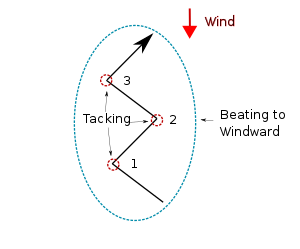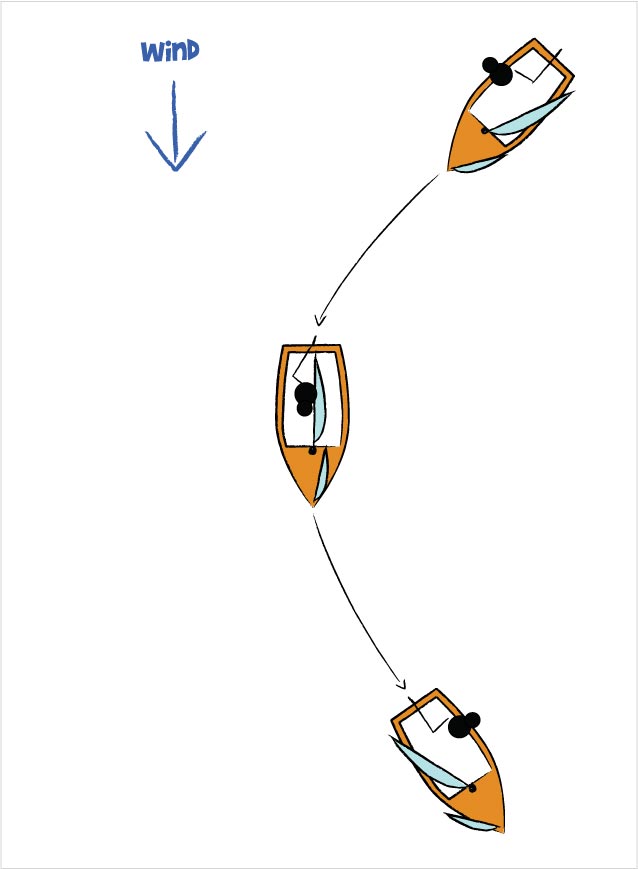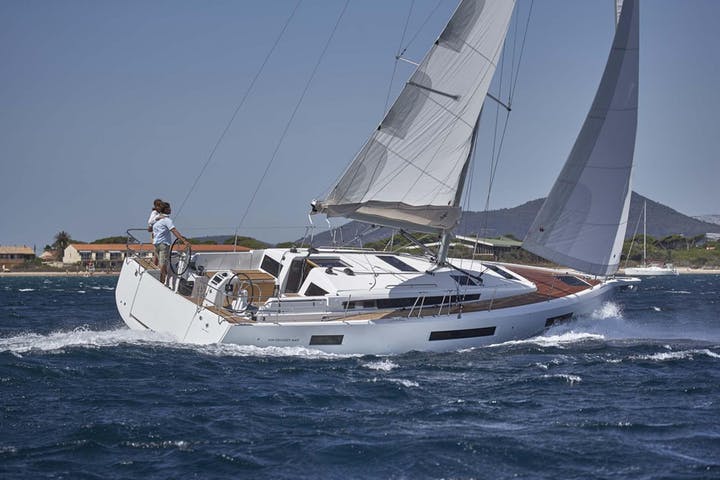Sailing Maneuver Techniques
In the world of Sailing, several skills and maneuvers are needed in order to keep the Sailboat moving and handle it efficiently. These include the ability to turn it to the direction that you want and the necessary skills to cope with different sea and wind conditions.
Aside from the skills in Five Essentials for Efficient Sailing, there are other things that a beginner must know as far as techniques are talked about. Learn two important Sailing Maneuvers in the following sections:
Tacking
In Sailing, Tacking is the act of changing the direction of the Sailboat by bringing the bow into the Wind. It is changing course, or getting the boat in the position which is directly upwind from its present spot. When the boat is positioned on one tack, the helmsman and crew pass the Bow through the eye of the Wind and the Sails are on the other side.

It will be successfully done through the combined efforts of the helmsman and crew. Thus, coordination and clear communication are necessary between them. Each should know his or her roles and carry them out smoothly, quickly, and properly. Otherwise, the maneuver will not be successful. In this section, know some guidelines in Tacking:
- Both the helmsman and crew should clear themselves of any Sailing Lines or anything that can get in the way while tacking.
- Make sure you have enough speed before tacking.
- The helmsman should ask the crew if he is ready.
- Upon knowing that the crew is prepared, the helmsman will push the tiller (slowly at first, and then rapidly) to change the course of the Sailboat.
- As the boat moves toward the Wind, the crew will release the Jib sheet.
- The crew will move in the middle of the boat to maintain balance.
- The crew will trim the Jib on the new leeward side.
- The helmsman should take control of the Mainsheet and course of the boat when tacking.
- When the boat starts to fall off on the tack, trim the Headsail.
This is a simple Sailing Skill. However, practice makes a lot of difference. Know the right maneuvers and timing to be able to tack smoothly and quickly. It is crucial to know when and how to tack properly. Make sure that both the helmsman and crew know and understand what to do in case they need to tack.
Gybing
If you can change the direction of the Sailboat by Tacking (turning its Bow into the Wind), you can also alter its course by bringing the Stern through the eye of the Wind – from a reach / run to a reach / run on the other. This Sailing Maneuver is called Gybing. In this maneuver, you will change the course of the boat – away from the Wind.

Just like Tacking, Gybing will be successfully done through the combined efforts of the helmsman and crew. Thus, coordination and clear communication are necessary between them. Each should know his or her roles and carry them out smoothly, quickly, and properly. Otherwise, the maneuver will not be successful. In this section, know some important guidelines in Gybing:
- Both the helmsman and crew should clear themselves of any Sailing Lines or anything that can get in the way while tacking.
- The helmsman will ask the crew if he is ready (or say “ready to gybe”).
- Upon knowing that the crew is ready, the helmsman will pull the tiller.
- Make sure to pay attention to the boom. Be ready to bend down.
- The helmsman will cross the boat to the new windward side.
- The crew will trim the Jib.
- The Sails will be filled with Wind. The crew will move to keep the boat balanced.
- The helmsman will steer onto the new course, while the crew will adjust the Centerboard position and ensure that the Sails are trimmed correctly.
Proper Gybing requires precision, timing, and clear communication between the crew and helmsman. Know when and how to gybe efficiently in order to keep the Sailboat balanced throughout the maneuver.
Docking
Docking is one Sailing Maneuver that sailors should learn, especially those who are sailing large Keelboats. The type and size of boat, boat traffic in the area, as well as current and Wind conditions affect this maneuver. Moreover, a clear plan, coordination among the people on board, and the ability to carry out the maneuver properly are crucial components in Docking.
There are many things to consider in doing this maneuver. In this section, take a look at some guidelines and factors to pay attention to when docking:
- Inform the crew first about your plan – how to enter and leave the dock. Clear communication among the crew members is crucial. Make sure that they know what they will do in the process.
- Safety is an important concern. Never place your arms and/or legs between the boat and the dock and pilings. A boat wake can cause injuries to your body if you crash against the dock. Moreover, do not try to stop the boat from hitting the dock using your legs or hands.
- Enough knowledge about handling Sailing Lines and Sailing Knots is a must when docking, especially when tying up to pilings.
- Consider the Wind direction as well as the Tidal condition. Dock the Bow first into the Wind and current.
- Prepare the necessary docklines and fenders.
- Bear in mind that boats do not have brakes. Approach the dock at slow speed, but maintain steerage.
- If you decide to stop at an unfamiliar marina, ask the dockmaster beforehand about the Wind, current, and Tidal conditions. You can also inquire about your slip.
- Tie the lines up to windward pilings first.
- It would be better if you have spare fenders and docklines on board.
- Practice docking in favorable conditions.
Docking is a very important Sailing Maneuver. Take note of the different factors to consider so you can enter and leave the area safely and properly, without having to worry about your boat crashing with other vessels.
Sailing Maneuver Techniques – Conclusion
Sailboats behave in their own unique manner, so the Sailing Maneuvers afloat may or may not lead to the results that you expected. It is crucial to know the features of your boat and how it reacts to certain instances. Perform the skill/s required in a particular situation. Moreover, several factors can affect your actions such as Wind conditions and improper ways of doing the techniques.
